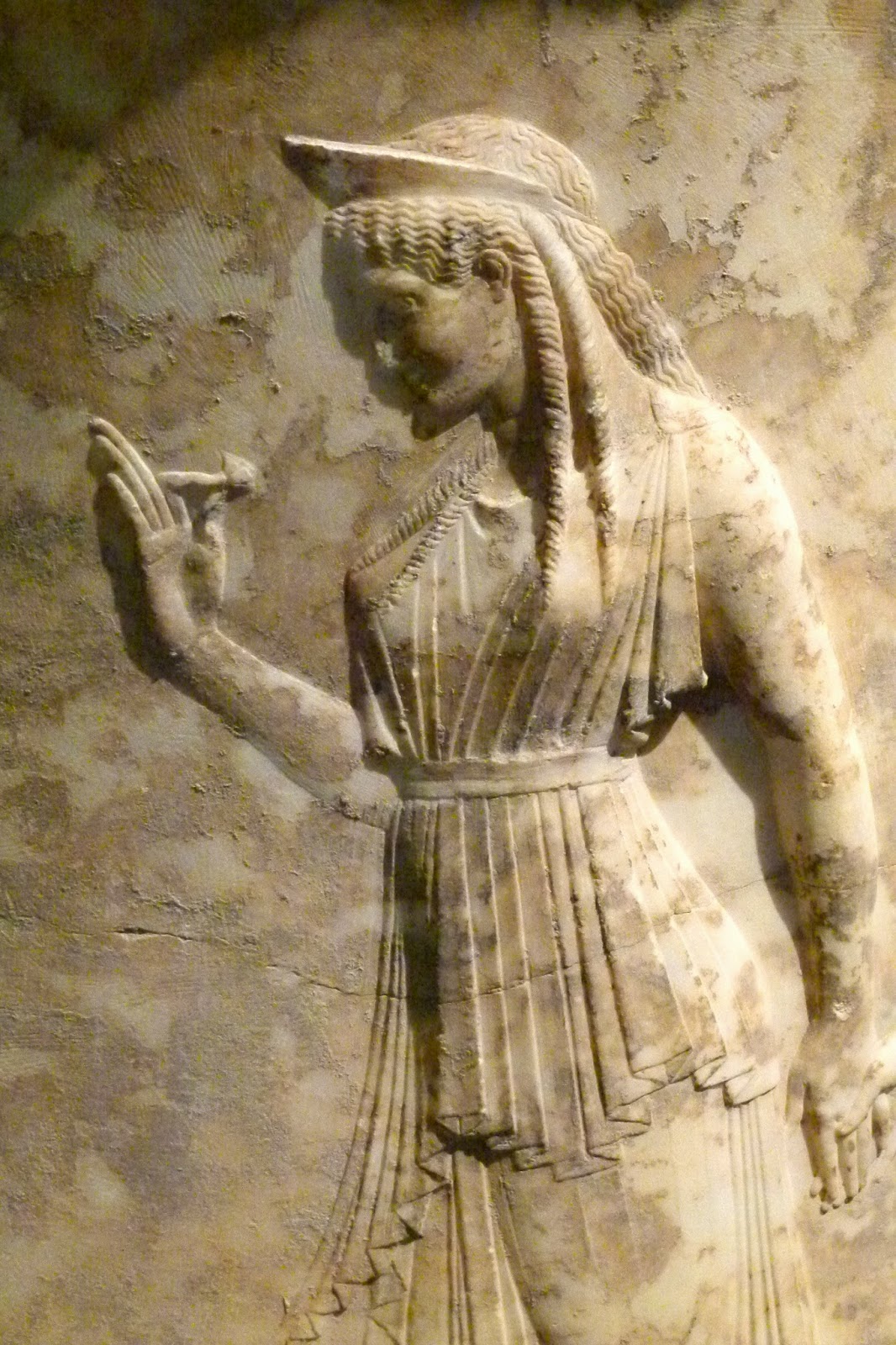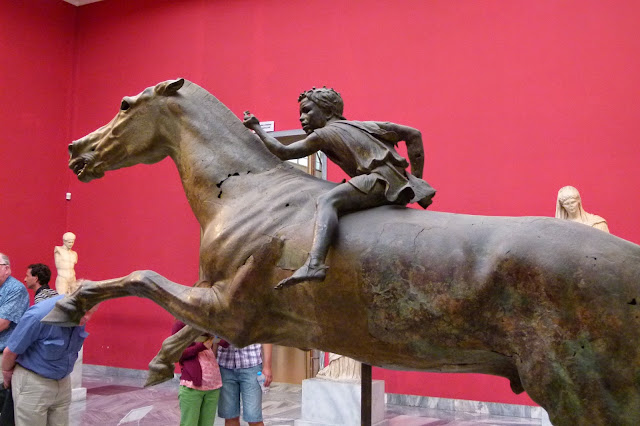5th October 2014
 |
| I've included this photo to show there was quite some variety in uniforms |
We had a few days in Athens and luckily made it
to Parliament House to witness the Sunday Changing
of the Guard. Despite the crowds, we
managed to catch some of the review and see those spectacular costumes of the
Presidential Guard. Their uniforms or “Foustanela”
derive from traditional Klepht costumes worn by resistance fighters during
Ottoman times. The pleats number 400,
one for each year of Ottoman occupation. Needless to say, there’s much more to this
uniform’s history and it’s well worth taking time to research it.
 |
| Athena guarding her domain |
After the
parade, I dashed off to Plaka to visit the National Folk Art Museum (dating from 1918!). There again I came
upon a wonderful collection of “modern” Greek costumes. Each region has its own adaption of the basic garments
and variations of colour and embroidery add to the mix. It was
also interesting to see a wonderful collection of ethnic jewellery and other
folk items that enhance one’s (well, my rudimentary) knowledge of these beautiful
garments. Of course I realised that we
were looking at “best” clothes, not those worn on a daily basis. One lucky group was being given a very
thorough guided tour by a Museum specialist – how fortunate were they! If you're in this neighbourhood - a bit of a hike for some, this Patterns of Magnificence exhibition may be of interest to you.
All these costumes got me thinking about cultural influences and the costumes of ancient Greece. The chiton, a typical form of Greek dress of those times, was so functional it was copied and adapted to suit by the Romans. The chiton was a single length of fabric draped over and around the body, then fastened or pinned to hold its shape. Of course, no textile remnants exist from this time so we only have artworks from the period for reference.






